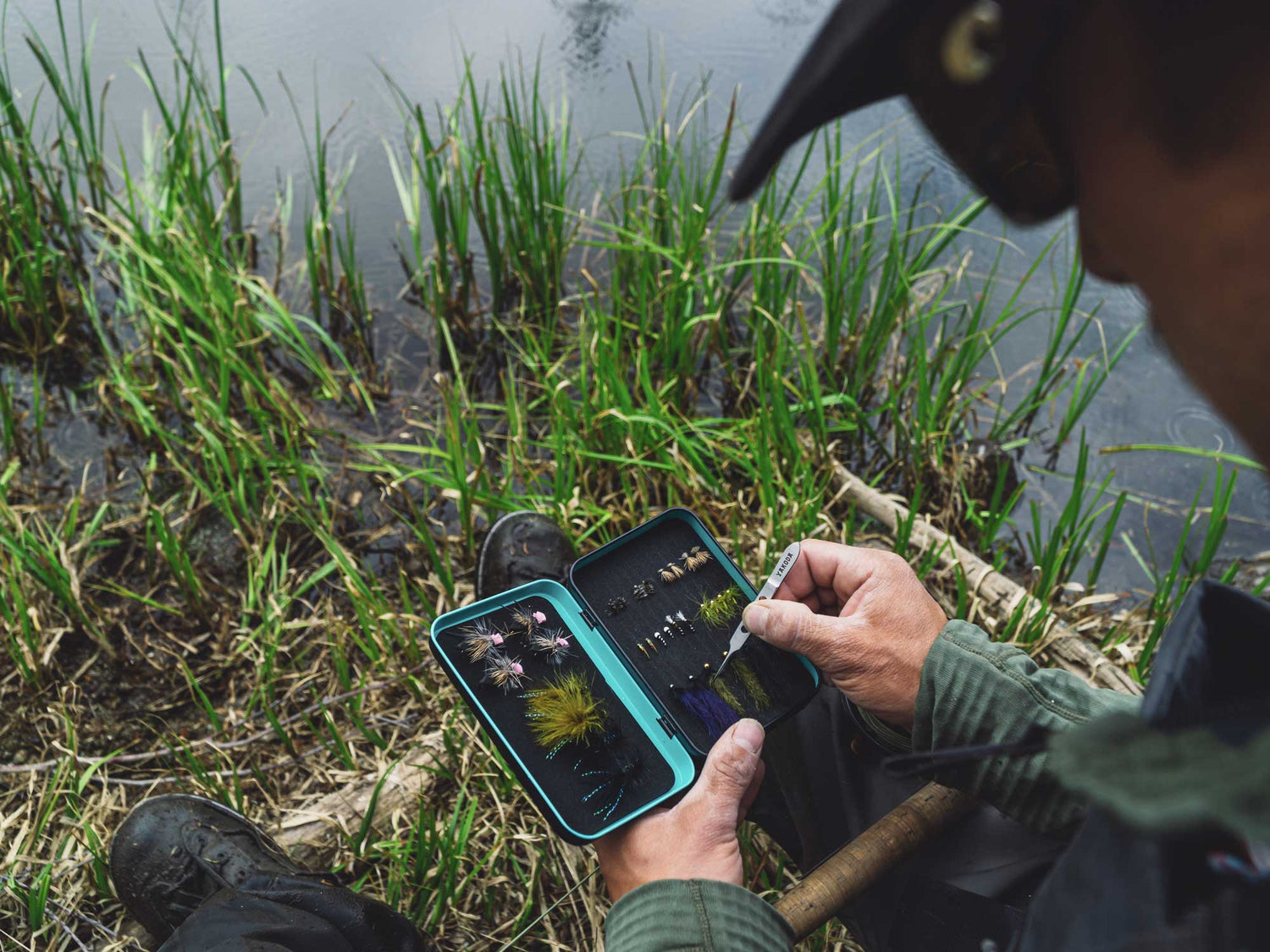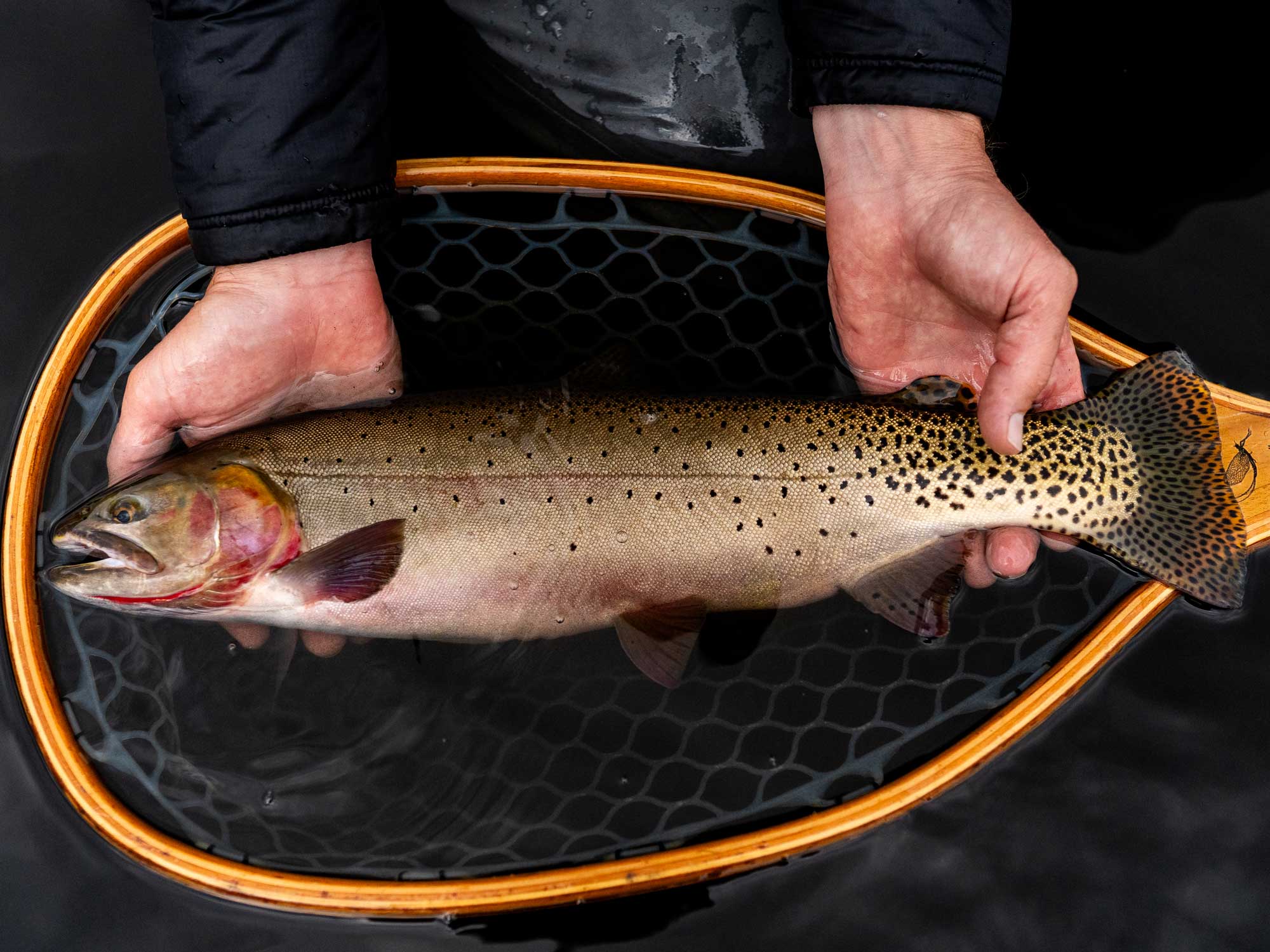If you missed part 1 of this series, click here to read the first installment.
After you’ve done your preliminary research and have arrived at the destination, how will you fish it?
Techniques
- Fish dry flies and dry/droppers. Everyone loves to fish dries on lakes—there’s really nothing better than watching a hungry cutthroat come up and smack your Chimera. But if you only fish dries, you’ll limit your success to fish feeding on the surface. Simply adding a dropper will help you attract fish that are wary of coming to the surface and usually double your odds of success.
- Nymphing is a great way to target larger trout. Typically, bigger fish will not come to the surface as they are wary of predators like osprey and eagles, as well as your shadow. Nymphing a few flies down deep often leads to larger and better quality fish, and this is where an understanding of a lake's underwater topography really helps so you can hone in on drop-offs or rock outcroppings that offer some structure and protection.
- Stripping leeches and other small streamers may be the most effective way to find fish at lakes. At shallower lakes, starting the day by stripping an olive or black Classic Bugger trailed with a Yakoda Green Machine is a good way to begin the search. The movement of both flies always excites fish and is a great way to cover a large sections of water. Spacing your flies 20-24” apart helps as most fish are drawn to the larger point fly but often commit to trailing fly. The best thing about this approach are the eats. You’re essentially streamer fishing in a lake, so be prepared for strong strikes.

Entomology
Lakes have abundant bug life and you’ll benefit from understanding the basics to choose the correct sub-surface flies and where to position them on your rig. The best thing about lake fishing is that the flies are typically bigger than what you normally fish at a tailwater. If you want a cheat sheet, we’ve put together a specific collection of stillwater flies that will put fish on the end of your line. Here’s what you need to know:
- Leeches are a prime source of food for all lake fish. Dead-drifting and stripping can both be effective techniques and the Yakoda Little Leech in a variety of colors is the most productive pattern we’ve found.
- Chironomids—aka lake midges—grow to large sizes in lakes and are a plentiful food source for trout. There are two primary stages worth knowing about: the larva and pupa stages. Depending on on how deep you’re fishing, you’ll want to learn a little more about the chironomid life cycle.
- Scuds live in lakes too, and are varied in size and color. Inspecting a few clumps of underwater vegetation near the shoreline should give you a good idea of what size and color to tie on.
- Ever see those thin blue bugs that look like mini dragonflies? Those are adult damsel flies. Their larva live in lakes and are an excellent choice if you find some when doing your shoreline survey.
Stay tuned for a continuation of this series that will get into more advanced techniques and fly selection and information about how to scout for locations as the season progresses.



